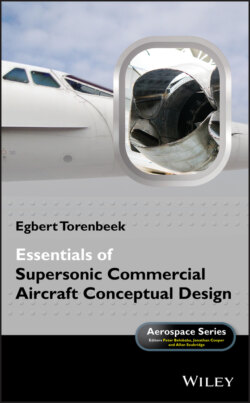Читать книгу Essentials of Supersonic Commercial Aircraft Conceptual Design - Egbert Torenbeek - Страница 7
Series Preface
ОглавлениеThe field of aerospace is wide ranging and covers a variety of products, disciplines, and domains, not merely in engineering but in many related supporting activities. These combine to enable the aerospace industry to produce exciting and technologically challenging products. A wealth of knowledge is contained by practitioners and professionals in the aerospace fields that will benefit other practitioners in the industry, and to those entering the industry from University.
The Aerospace Series aims to be a practical and topical series of books aimed at engineering professionals, operators, users, and allied professions such as commercial and legal executives in the aerospace industry. The range of topics is intended to be wide ranging covering design and development, manufacture, operation, and support of aircraft as well as topics such as infrastructure operations, and developments in research and technology. The intention is to provide a source of relevant information that will be of interest and benefit to all those people working in aerospace.
This book extends the author's previous excellent and informative treatises on concept design to focus on supersonic transport aircraft for commercial use. The heady days of supersonic aircraft designs from the UK, USA, and USSR are long gone with the demise of SST for a number of programme and operational reasons, largely related to operating and support costs. A surge in leisure and business travel together with savage competition to reduce ticket prices led to the emergence of very large aircraft and ETOPS which made long distance travel relatively comfortable and affordable. This, and an increase in e‐commerce and environmental concerns, seemed to indicate that the days of supersonic business travel would never return. However, modern business and diplomacy still requires face to face discussions and rapid responses that can be made easier with supersonic travel, so there is a potential market, if not for mass travel then certainly for business users for whom time is valuable.
The author has taken a practical view of the possible re‐emergence of supersonic transport by examining the history of the previous projects and the lessons to be learned from that era. He has developed this by considering contemporary circumstances that have an impact on concept design, such as modern design methods, modern materials, modern aircraft shapes, and environmental issues. This provides a fund of invaluable experience and material for concept designers to examine the engineering and operational aspects of supersonic transport. This knowledge will contribute to the study of the feasibility of supersonic commercial types that will be viable in today's economic and political climate. This is a valuable book for concept engineers, politicians, operators, academics, and forward thinkers.
Peter Belobaba, Jonathan Cooper and Allan Seabridge
November 2019
